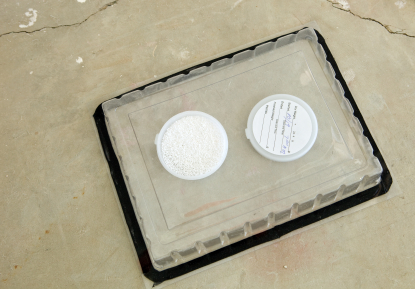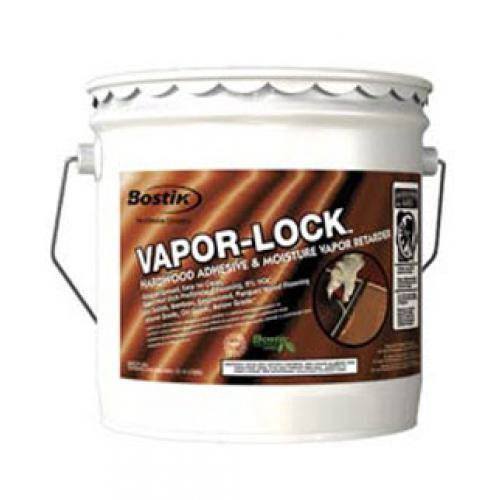One of our readers recently submitted a question to “Ask Ruthie” that I thought would be excellent to share with everybody. The homeowner had recently purchased a home built built before 1972 and had learned that their existing 9×9 vinyl tiles most likely contained asbestos. This homeowner was told removing them would require special removal and disposal procedures, adding to the project’s overall costs, which the homeowner was keen to avoid.
It had been recommended to this homeowner that the only other option for addressing this problem would be to float a subfloor and install the hardwood over that; however, this option was also not very attractive to the homeowner, as he didn’t like the hollowness that is sometimes noticeable in floated subfloor installations.
The Question: Can you install hardwood floor over asbestos tile without a floating subfloor?
The short answer to this question is, “YES,” as long as you do it right.
Keep it dry

Your greatest concern when installing hardwood over asbestos tiles is moisture, particularly from the underlying concrete slab. Moisture can come through the slab and wick right through the tiles to the hardwood and cause it to buckle. Therefore, the first steps you’ll want to take are to conduct a moisture test of your concrete slab and determine the relative humidity of the room you are working in. Wood flooring has a comfort zone which is generally considered to be between 30% and 50% relative humidity and between 68 and 72 degrees, for this reason, you should also run a dehumidifier in the room you are working in to keep it as dry as possible for the duration of our remodeling project.
Add A Barrier

It is not necessary to float a subfloor but it is necessary to include some type of moisture vapor barrier between the asbestos tile and the hardwood floor. In some instances, a layer of Red Rosin Paper
will add enough of a barrier to do the trick; however, in order to ensure the hardwood floor stays dry, spreading a layer of trowel-able moisture and vapor barrier
over the asbestos tiles will definitely keep the moisture out.
Let Your Wood Acclimate Before Installation
Finally, prior to the installation of the hardwood itself, be sure to give it a chance to acclimate to its new room prior to installing it. Wood is what is called “hygroscopic,” which means it can absorb moisture right out of the air and in so doing its shape changes. When “green” wood is first milled, it may have a moisture content of 30%. Hardwood floor manufacturers usually dry their wood down to between six and nine percent prior to making it into flooring. This also reduces its size by approximately seven percent. A room with between 30% and 50% relative humidity will cause the planks to expand somewhat and you’ll begin to see gaps in your joints. Allowing the wood a chance to acclimate will enable the wood to achieve moisture equilibrium with its environment.
Conclusion
Again, it is not necessary to install a floating subfloor over asbestos floor tiles in order to install hardwood flooring but you must take the proper steps to keep the moisture out. Conducting the appropriate moisture tests, using a dehumidifier, installing a proper moisture barrier and and letting your wood acclimate are key to ensuring that your new hardwood flooring installation remains beautiful for many years to come.

One response to “Install hardwood floor over asbestos tile without a floating subfloor?”
Would you do this same procedure for a engineered wood floor?
My daughter wants to use a 3/8 thick Bruce engineered floor to match existing Bruce flooring.
Thank you for the answer.
Leigh Thomas